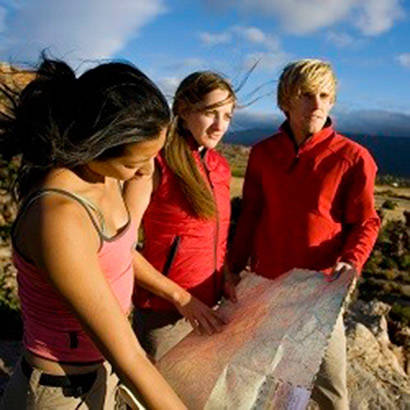
Engaging in physical activity can be a challenge in rural areas, where sidewalks are scarce, fitness facilities are limited, and there’s little access to public transportation. In western Pennsylvania, many residents are confronted with this issue on a daily basis. To combat this, the Pennsylvania Department of Health and the University of Pittsburgh Graduate School of Public Health created WalkWorks, a group-based walking program implemented in six counties: Cambria, Crawford, Greene, McKean, Venango, and Washington.
Local partners for this effort include the following:
- Center for Rural Health Practice at the University of Pittsburgh at Bradford
- Crawford Health Improvement Coalition
- Greene County Human Services
- Conemaugh Memorial Medical Center
- Oil City Area YMCA
- Washington County Health Partners, Inc.
According to program creators, WalkWorks “encourages sustainable physical activity through the built environment, social supports, and healthy lifestyle behaviors.” The initiative focuses on coordinating and maintaining a network of walking groups composed of community members of all ages and abilities, many who have not traditionally engaged in regular exercise. The WalkWorks partners created the program with the understanding that increasing opportunities for physical activity will lead to the adoption and maintenance of more active and healthier long-term habits. “WalkWorks identifies and promotes safe walking routes; establishes guided, community-based walking groups; impacts local policy to increase access to safe walking routes; and helps schools develop walk-to-school programs” says Pennsylvania WalkWorks
To launch WalkWorks, locations for walking routes/trails were identified, and outdoor kick-off events were held in each community. As an incentive in Greene County, a local insurance provider offered new walking shoes and athletic wear to participants. An extensive media campaign was conducted to market the program and encourage participation.
Twenty-eight walking routes—marked by signage at trail entrances—are included in the WalkWorks network. Walking-group participants receive a packet with registration and trail information, a history of the surrounding area, and maps of each of the routes. And what if weather does not cooperate? Some of the WalkWork partners have created indoor instructor and DVD-based walking programs.
WalkWorks has resulted in the establishment of walking groups throughout the six participating counties. In Greene, 350 students from two elementary schools engaged in The Mileage Club, an in-school program where students track and receive incentives for miles walked. Administrators cite the success of WalkWorks—noting the permanent walking groups created, and the long-term increase in physical activity they have observed with local residents.

